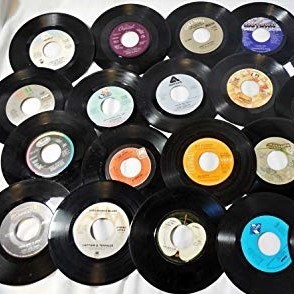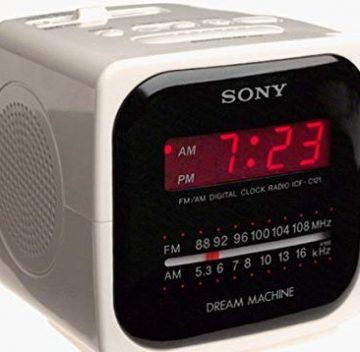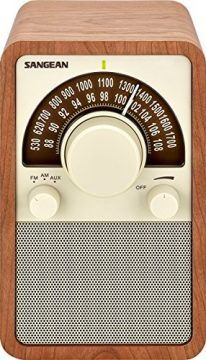by Anitra Pavlico

What has happened to music? To the joy of cozying up with your records, tapes, or CDs and your music source, whether it was a boom box, or stereo with faux-wood speakers taller than a small child, or Walkman? It used to be simple to figure out where to buy music and how to listen to it. You went to the local record store, and then you brought it home and absconded to your bedroom, where you cranked your new purchase as loud as you could before your parents knocked on the door and told you to turn it down. There was a spatial aspect to music, as the music store was obviously circumscribed in space, with different sections for different tastes. Listening also usually took place in an intimate setting, layered like a palimpsest with memories of years past. Well before five-disc (and then 100-plus-disc) CD changers, we listened to one album at a time, and usually with the songs in the same order that the artist or the producer intended. It was a form of communion, however illusory, with the musician. There were also visual and tactile elements, as you had something to hold in your hands and pore over–liner notes, album credits, lyrics, glossy pictures of the band members. Did anyone ever vote to relinquish these sensory companions to the music-listening experience?
I did not have access to the ultimate in high fidelity as a kid, and I remember practically gluing my ear to my Sony Dream Machine clock radio’s speaker. When my parents bought me my first “boom box” they managed to find one with only one speaker. It hardly boomed, but it was still more than sufficient. In my mind’s ear, even these devices had much better sound quality than the digital music we have come to rely on. At the source, at least, the sound was fuller, less broken down or compressed into heartless bits and bytes. We did also have a lot of vinyl, not because we were hipsters, but because it was the 1970s.
I can’t pretend that it always makes a difference, today’s lesser sound quality. It was a trade-off that didn’t trouble me for years as I joined the rest of the world in celebrating the fact that virtually my entire music collection could fit on an iPod that I could carry around with me. As years go by, and you simply lose the memory of what music used to sound like, you don’t realize that convenience has supplanted most of the other elements of the experience of listening to music.

It is incredible that in this age of seemingly infinite options and accessibility of music, I do not hear anyone say they are excited about a particular music platform. People tend to use Spotify, I think because it is free, it recommends other music based on your selections, and essentially because of the network effect of hearing about others using Spotify. Celebrities’ (paid?) promulgation of their own Spotify playlists does not hurt the company’s cause. I have used it, and it is really not bad, but the ads are intrusive. For ten dollars a month you can listen ad-free, and I have heard they have a new higher sound quality available for an additional fee. I have not read much about people using Google Play to stream, so I may be the only one who was actually doing that.
Sometimes a banal change can be monumental. I experienced such a life-enhancing planetary shift recently . . . I stopped using Google Play to stream music, and switched to Tidal. I dislike the fact of Tidal’s celebrity backers (although it bills itself as “artist-owned,” which has a certain appeal, even if one of the artists is a mogul) and tried to ignore it for years, but the superior sound quality is impossible to ignore any longer.
Having millions of choices of songs, albums, and playlists in the streaming music world can lead to choice overload and ultimately to abandoning the enterprise. There is something about having the computer or smartphone introduced into the equation that has allowed all of the distractions, glitches, and connectivity downsides that accompany the devices to taint the listening process. I do not find researching music-streaming options on message boards or tech blogs to be very exciting. I would rather spend time listening or researching the music itself, or discovering new music, but apparently you have to do research to see what’s the best way to discover new music. God help us, something formerly pure and untrammeled has become so tedious.
People tend to get offended at the idea of higher digital sound quality and say they can’t tell the difference, and that those who say they can are imagining it, or that it’s pointless to try to compare because it depends on the listener’s sound card, or speakers, or headphones. At any rate, I believe–or imagine–that Tidal sounds better. I have really been enjoying this, and it’s like my ears have been thirsty for it. Unfortunately it has made it much harder to listen to radio online because it doesn’t sound nearly as good–I wish I were not imagining that, because I used to listen to my local classical station online all day at work. Am I a fool to think my new platform sounds better? An analogy is someone who can barely tell the difference between a ten- and a hundred-dollar bottle of wine (I fear this is me). I’m not going to disparage an oenophile who talks about peach and chocolate flavor notes and tell him he’s imagining it. I just don’t have the ability to taste them. For the sake of efficiency in storage and delivery the music has been digitally compressed. But there comes a time when the consumer (for in capitalism that is all that music-lovers are) has to wrest the listening experience away from forces of efficiency and economy, which are so far removed from the aesthetic appeal of an art form we love. The revival of vinyl is a perfect example of music-lovers demanding a product that the music industry had left for dead.

As we move more of our psychic lives online–friendships, romantic entanglements, time scheduling, reading and other hobbies–music has followed suit, with the accompanying loss of spatial and tactile anchors. Even as I enthuse over a music platform where I love the sound, customized playlists, and exclusive music releases (I have been relishing the early release of “Prince: Originals,” for example), I have hardly found a replacement for the hygge experience of listening to music in my bedroom on the Sony Dream Machine. Hygge, an untranslatable Danish word meaning a sense of comfort or well-being, is sorely lacking from all modern digital music offerings. One of my best recent purchases has been a small radio, not a Dream Machine, but with much better sound, so I can listen to my classical station in my bedroom just as I used to listen when I was young. It is utter hygge, and I can’t believe such a minor purchase has brought me so much happiness. Listening to David Dubal’s “Reflections from the Keyboard” at the end of a busy day is pure heaven.
As we unwitting cyborgs fuse with our phones and bemoan our lack of free time, our psyches atomized by myriad selfies and overshares, I’m confident we will eventually reject much of the modern music-listening experience, go to more concerts, and set up listening nooks in our homes for album-release parties for our friends. The true geeks will mark anniversaries of album releases, as we did in our house yesterday–47 years since the release of Ziggy Stardust! Just because we didn’t vote to have intangible MP3s replace a record album that we can hold in our hands, doesn’t mean we can’t listen to music in ways that make us happy again.
